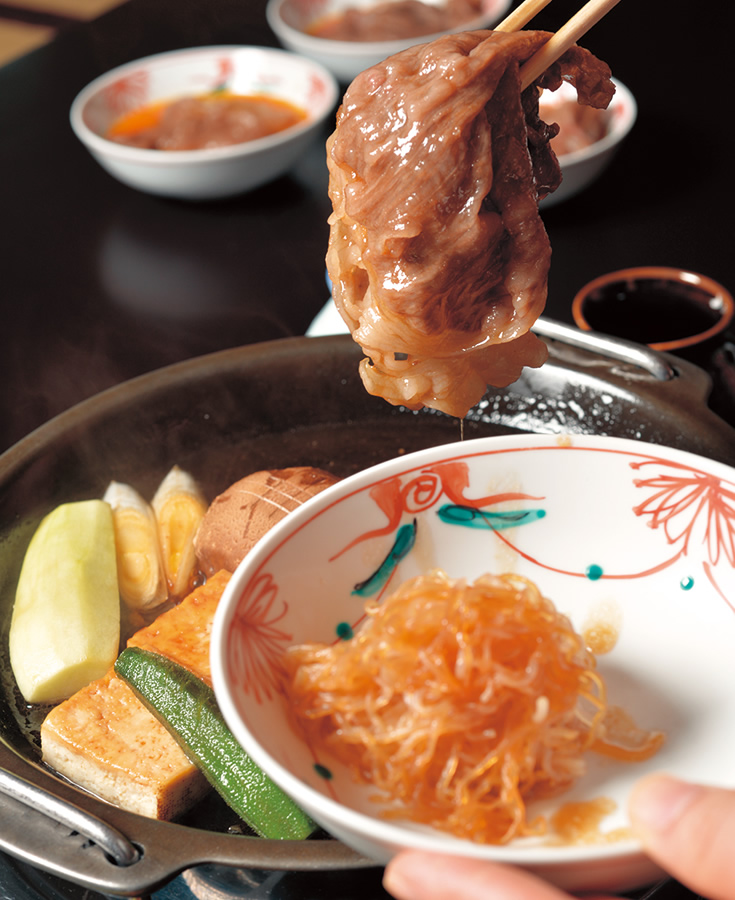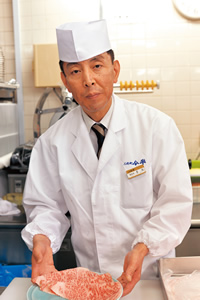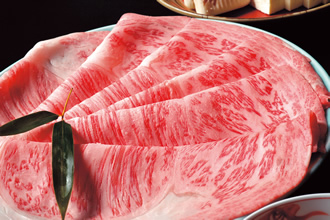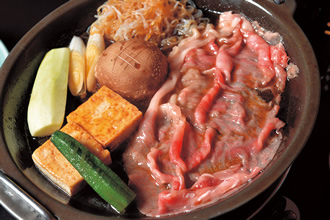niponica is a web magazine that introduces modern Japan to people all over the world.
2017 No.22
 Tasty Japan: Time to Eat!
Tasty Japan: Time to Eat!

Sukiyaki
The Delectable Wagyu Treat
Photos: Kohara Takahiro
Cooperation: Ningyocho IMAHAN Ueno Hirokoji Restaurant

Remove the meat from the pot before it is overcooked. Dipping the meat in a bowl of beaten raw egg is popular in Japan, though the meat is delicious undipped, as well.
Chef Aoki Katsutoshi explains, “It is important for the beef to be fresh, as well. We prepare the beef not in advance, but just before serving it to our customers.”
In rankings of the best dishes in Japanese cuisine, sukiyaki inevitably comes in either first or second. Although some variations are made with pork, chicken or fish, traditional sukiyaki features loin or round beef sliced into thin strips. The chance to indulge the taste buds with the sumptuous flavors of wagyu beef is the secret to the dish’s popularity in Japan.
Sukiyaki is a one-pot meal eaten from an iron pot as it cooks over a burner on the table, but the style of preparation differs depending on the region. In Japan’s eastern Kanto region, a seasoned broth called warishita is prepared first, while in the western Kansai region, the beef is first boiled then simmered in sugar and soy sauce. Wherever you are in Japan, preparing the main ingredient, the beef, is the crucial first step. Once the beef slices are cooked to preference, they are lightly dipped in beaten raw egg before they are eaten. Vegetables and tofu (bean curd) are placed in the pot after the broth has been infused with the fat from the cooked beef, soaking up the fat and broth, for an even more exquisite taste.
Some say the difference in how people eat sukiyaki comes down to a difference in how sukiyaki originated in the two regions. Kansai-style sukiyaki began as a dish cooked in the field using a spade (suki) to hold wild fowl and animal meat as it roasted (yaki) over a fire. By contrast, Kantostyle sukiyaki is thought to have been brought in through Yokohama as gyunabe (beef pot) after Japan opened its doors to the rest of the world at the end of the Edo period (mid-19th century). However it originated, beef was not a common part of the diet for most Japanese people until after the Meiji period (a period of Westernization that began in the late 19th century), and the beef sukiyaki known and loved today was not seen until the end of the Taisho period (beginning of the 20th century).
After a history of almost 150 years, sukiyaki still reigns supreme among lovers of Japanese cuisine thanks to Japan’s cattle farmers, who have worked hard to deliver the most delicious wagyu beef to the table. Sukiyaki is a sophisticated way of bringing out the best of Japanese beef’s rich taste.
To make sukiyaki
- Pour warishita, a seasoned broth made with soy sauce, sugar, soup stock, etc., into an iron pot. Bring the warishita to a boil and add beef slices.
- Cook beef to preferred taste and remove. Add vegetables such as green onions, shiitake mushrooms, shirataki noodles, tofu and other ingredients.
- Allow to simmer before adding more beef slices. Eat as ingredients are ready, adding more ingredients as space allows.
The popularity of a sukiyaki restaurant is determined by the quality of the wagyu it serves. Top-grade sirloin is preferred by connoisseurs. The photograph shows the serving for two people.






